The Pacific Islands, also known as the Pacific Islands Group or Pacific Islands Region. They have incredible cultures that have developed over thousands of years. In this post, I will elaborate on Pacific Islander art and their most famous works to date.
These islands are divided into three major regions: Melanesia, Micronesia, and Polynesia. For people in central locations across the world, the pacific islands are known as vacation utopias. One of the main reasons for this besides their landscape is their artistic culture and lenses on the world.
Their impact on the art world is prevalent also due to their incorporation of social issues that islanders face.
Shigeyuki Kihara
Shigeyuki Kihara is a contemporary artist from Samoa and Japan. She is known for her thought-provoking artworks that explore issues of gender, identity, and colonialism in Pacific Islander Art.
She primarily works in the mediums of photography, video, and performance art, but also incorporates oil on canvas paintings in her practice. Kihara’s works often highlights the experiences of Pacific Islanders, particularly those who identify as LGBTQ+.
Kihara’s early works focuses on the complexities of gender and sexual identity. This is drawn from her own experiences as a queer Samoan woman. One of her notable series of oil on canvas paintings is “Fa’a fafine: In a Manner of a Woman.”
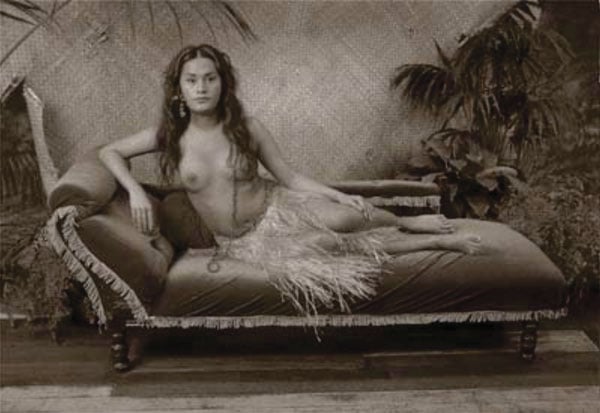
This work depicts Samoan transgender women known as “fa’afafines” in traditional Samoan attire.
“Fa’a fafine: In a Manner of a Woman” is a series of artworks. The series comprises multimedia performance art that depicts Samoan transgender women, known as “fa’afafines,” in traditional Samoan attire. The term “fa’afafine” is used in Samoa to refer to individuals who are assigned male at birth but identify and live as females.
Her works depict fa’afafines in traditional Samoan attire, such as the taupou (a ceremonial maiden) or the siva (a traditional Samoan dance), showcasing the beauty and grace of their gender identity. Kihara’s paintings also address the challenges and discrimination that fa’afafines may face in Samoan society. It also also celebrates their resilience, identity, and cultural significance.
Filipe Tohi
Filipe Tohi is an artist known for his intricate oil on canvas paintings that are influenced by Tongan culture and Pacific Islander Art. He was born in Tonga and is based in New Zealand. Tohi is renowned for his abstract and geometric artworks that explore the themes of Pacific Islander identity.
Tohi’s paintings often feature bold and vibrant colors, along with precise and intricate patterns that are inspired by Tongan bark cloth (ngatu) and woven mats (tapa). His works are characterized by a fusion of traditional Tongan motifs with modern abstract forms. This results in visually stunning and culturally rich compositions.
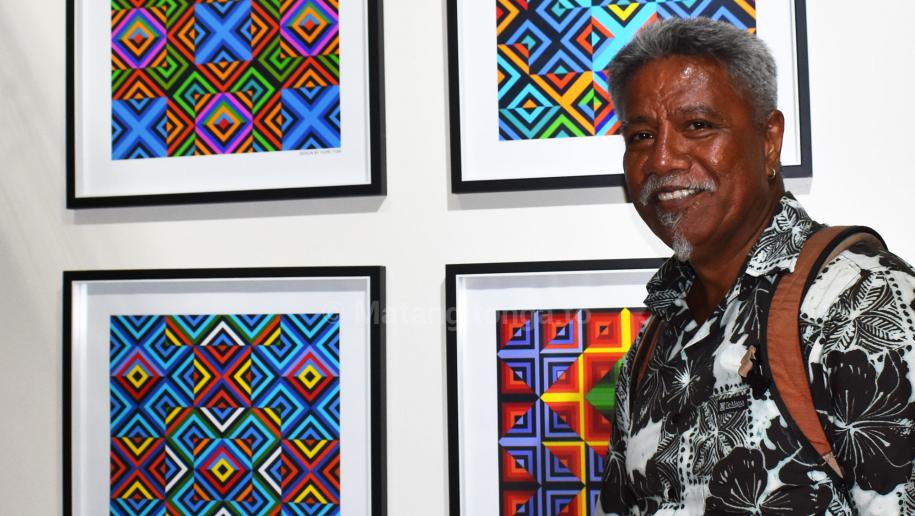
Tohi’s paintings are deeply rooted in the cultural history and heritage of Tonga. He draws on traditional Tongan design elements, such as the ngatu patterns and lalava (binding patterns). Also, concepts from Tongan philosophy and cosmology. His artworks often reflect the complex interplay between Tongan cultural traditions and contemporary influences, addressing issues of identity, diaspora, and globalization.
Tohi’s oil on canvas paintings are a reflection of his own personal journey as a Tongan artist living in the diaspora. He navigates questions of cultural heritage, identity, and belonging. His works have been exhibited in numerous galleries and museums internationally. They have received recognition for their innovative use of traditional Tongan aesthetics in a contemporary artistic context.
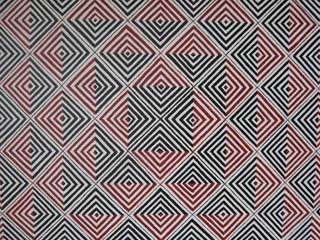
Tohi’s paintings also embody a sense of spirituality and reverence for the natural environment, drawing on Tongan spiritual beliefs and the connection between nature and culture. His artworks often reflect the profound relationship between the land, sea, and sky in Tongan cosmology, as well as the significance of ancestral knowledge and wisdom in Pacific Islander cultures.
Ken Thaiday Sr.
Ken Thaiday Sr. is a renowned contemporary artist from the Torres Strait Islands. It is an archipelago located between Papua New Guinea and the northern coast of Australia. Thaiday is known for his distinctive sculptures, paintings, and installations. They draw on the cultural traditions and spiritual beliefs of the Torres Strait Islander people.
Thaiday’s paintings were often characterized by bold colors, intricate patterns, and a fusion of traditional Torres Strait Islander motifs with modern artistic styles. He is known for his experimentation with different mediums and techniques. This includes oil on canvas paintings, mixed media, and printmaking.
Thaiday’s artworks reflected his deep connection to Torres Strait Islander culture. To conclude, he draws on the oral traditions, mythology, and customs of his people. Then, he incorporates them into his artworks to share and preserve the rich heritage of the Torres Strait Islands.
One of Thaiday’s most famous painting series is the “Nugal-warra” series. It depicts the traditional masks and ceremonial headdresses used in Torres Strait Islander culture.
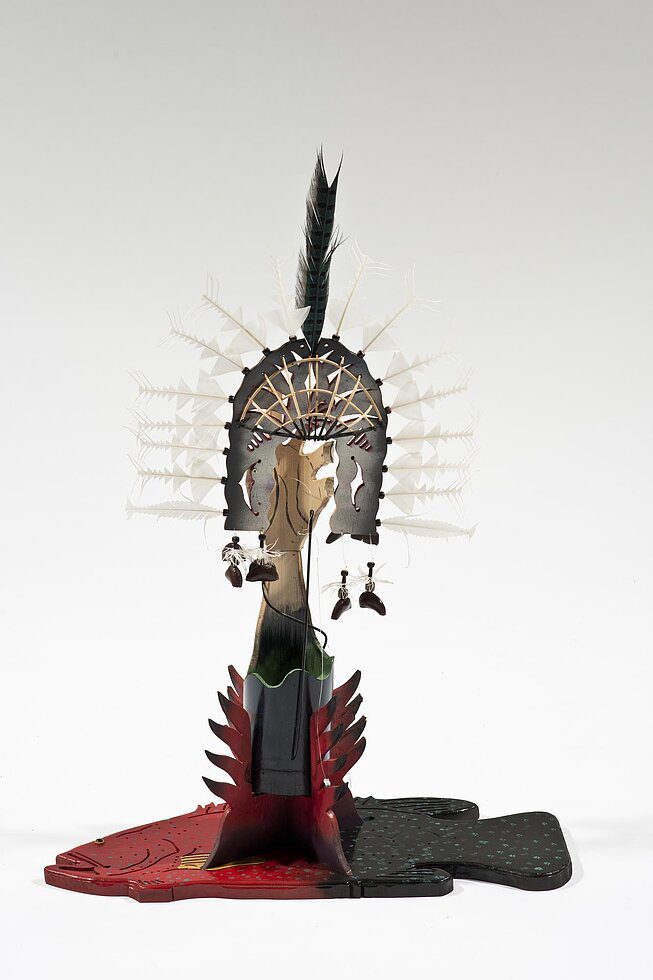
These masks and headdresses, used in ceremonial dances and rituals. They hold spiritual significance and represent ancestral connections, totems, and stories. Thaiday’s paintings captured the intricacies and symbolism of these traditional cultural objects. Also, he adds his own artistic interpretation and contemporary flair.
Thaiday’s artworks were widely exhibited in Australia and internationally, and he was recognized for his contribution to Torres Strait Islander art and culture. His paintings were collected by major galleries and museums, and his legacy continues to inspire and influence contemporary Torres Strait Islander artists today.
Apart from his artistic practice, Thaiday was also a respected cultural leader and advocate for Torres Strait Islander rights and recognition. He played a significant role in the revitalization of Torres Strait Islander cultural practices and traditions, and his artworks were an important vehicle for preserving and showcasing Torres Strait Islander culture to wider audiences.
Paul Gauguin
Paul Gauguin, a French Post-Impressionist artist, is known for his distinctive style and unique depictions of life in Tahiti and other Pacific islands. His works often featured vibrant colors, bold shapes, and a sense of exoticism. He is recognized for his influential role in the development of modern art.
One of Gauguin’s notable paintings featuring a canoe is “The Day of the God” (1894). This oil on canvas painting depicts a scene from Tahitian mythology. It shows a group of Tahitian women in a canoe being greeted by a group of people on the shore. The painting is rich in color and features a dynamic composition with the canoe as a central element.
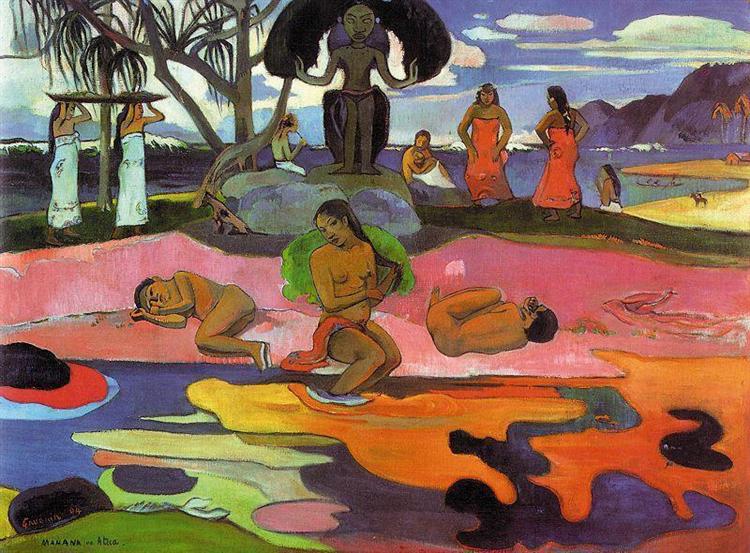
In “The Day of the God,” Gauguin used his characteristic bold and vibrant color palette. It has contrasting warm and cool tones, to create a sense of depth and dimension.
The use of color and form in the painting gives a sense of movement and energy to the scene. It captures the dynamic nature of the Tahitian culture and the experience of being in a canoe on the water.
Gauguin’s depiction of the canoe in “The Day of the God” reflects his fascination with the local Tahitian culture and his interest in capturing the unique customs. The canoe in the painting serves as a symbol of the local way of life. Also, as a means of transportation and connection to the sea, which was an important part of Tahitian culture.
However, it’s worth noting that Gauguin’s depictions of the Pacific islands have been criticized for their exoticizing and Orientalist tendencies. They often portray a romanticized and idealized vision of the local people and culture.
Gauguin’s relationship with the people of Tahiti and the impact of his artistic portrayal of the Pacific islands are complex. They are debated topics among art historians and scholars.
Despite the controversies surrounding Gauguin’s depictions of the Pacific islands, his works continue to be studied. They are appreciated for their artistic merit and historical significance. His works are considered important contributions to the development of modern art. In conclusion, his depictions of Tahitian life and culture remain iconic in the art world.
